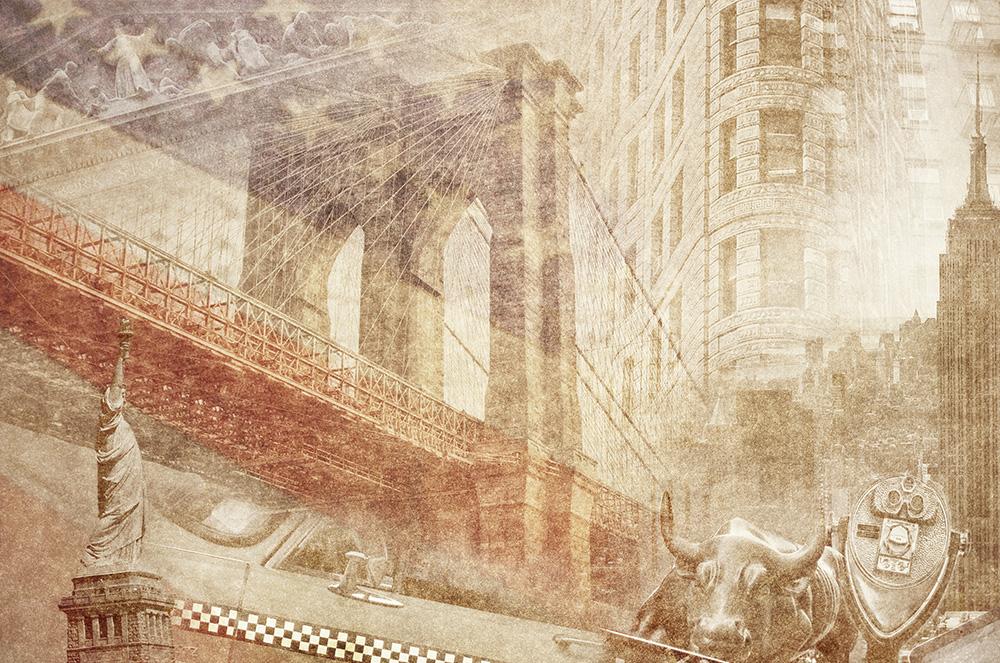
The amazing history of New York City
New York is the city located on the north-east of the United States. New York is the largest city in the country; along with numerous suburbs, it forms one of the world's largest urban agglomerations. It is located at the mouth of the Hudson River, with numerous bays and channels, forming a convenient harbor. Actually, New York City covers an area of about 303 sq mi, including the adjacent part of Long Island. It is divided into five major administrative districts (Manhattan, Bronx, Brooklyn, Queens and Staten Island), whose boundaries are straits and channels. The largest economic, political, trade, financial, scientific and cultural center of the United States started its history from 1524, and it has several periods.
New York history periods
The Dutch period. In 1524, Giovanni da Veratstsano, a Florentine navigator who sailed under the French flag, first entered the vast bay of New York. In 1609, these places were more thoroughly investigated by Englishman Henry Hudson, who was in the service of the Dutch East India Company. The exact date of the first permanent settlement on the site of the future New York is unknown. However, the Dutch that settled in 1624 on Governor Island were tending their cows on Manhattan in the summer of 1625. Soon, the first fort was built on Manhattan, appearing on the perspective plan of the East India Company in 1625. In 1626, Peter Minuit, the first director-general, bought Manhattan from local Indians of the Delaware tribe Lenni Lenape. Immediately after that there has begun the construction of a fortified trading post, known as New Amsterdam.
British rule. September 8, 1664 New Amsterdam fell under the onslaught of the British forces. The city and the colony were renamed in New York in honor of its new owner James, Duke of York. The British conquest promoted conversion of New York into the Anglo-American city, although with notable Dutch flavor. British rule was undermined in 1673,when the Dutch recaptured the city and gave it a new name - New Orange, but in 1674, England regained control over it. During more than a century of British rule, the population of New York increased to 25 thousand people and moved uptown to the current City Hall. The welfare of the city were built mainly upon the work of craftsmen and trade. Nevertheless, many residents were engaged in the production of flour and sugar, alcohol distillation, shipbuilding, ship manufacturing equipment, and provisions. Tailors, hatters and shoemakers found there the great demand for its products. Ships of New York merchants plied the coastal waters of North America and the goods were taken to the West Indies and to the shores of Europe. By the mid-18th century, domestic trade has expanded from its nearest suburbs of New York to Connecticut and New Jersey. At the time of the acute struggle for influence between France and England, which started in the region in the late 17th century. Privateering, smuggling, and government contracts contributed to the development of the urban economy.
The economic expansion. From 1785 to 1790, New York City remained the capital of the young United States, and also it remained the capital of the state until 1796. There were approx. 1.5 million residents of the then Greater New York. Such an impressive progress contributed a lot to trade and craft. Since the early 1790s until 1807 local ship owners were making money on goods imported from Europe, which became available to Americans in the era of the Napoleonic wars. After the construction of the Erie Canal in 1825 and the construction of the railway which connected New York City to Albany, Buffalo, Chicago, and the Pacific Coast by 1870, the entire continent has become profitable market for New York. Meanwhile, the city was turning into a major international trading port; it was promoted by regular shipping services between New York and Europe, the rapid development of the banking and insurance business, thus the New York merchants have become influential mediators in the export of cotton from the American South to New England and Europe. In addition, the 1850s were marked by the rapid development of light industry.
Urban development. The modernization of urban infrastructure and advances in the development of social, cultural and the domestic sphere in many ways and have created a worldwide reputation of New York in 1820-1920. Already in 1825, the city had gas lighting, then electricity came to replace gas lights in the 1880s. Croton Aqueduct, built in 1842, gave the city a modern water supply system. In 1859, Central Park was opened. Improvement of urban transport system, including the introduction of a horse-drawn tram in 1850s, elevated trains in 1870s, electric trolley buses in 1890s, and finally the start of the first subway line in 1904, helped relieve overcrowded neighborhoods of southern and central districts of the city. The ancestors of today's New York subway can be called elevated railway. The first such railway, of course steam-powered, was discovered at the bottom of Manhattan in 1868. After several decades, elevated railways thickly covered Manhattan and Brooklyn (which was an independent city until 1898). Some of the lines were later electrified. Subway construction was carried out under the slogan of “City Hall to Harlem in 15 minutes!” The first line of the subway itself was commissioned October 27 1904. City Hall station took the first subway passengers. At the inauguration ceremony of the subway, then Mayor George B. McClellan led the train with his own hands. The train drove up to Harlem not for 15 but for 26 minutes, and it was still a remarkable achievement. In the evening of the first day after the official opening, more than 120,000 New Yorkers made the trip under the ground. By 1908, the line of IRT, which consists of two routes was already reached Bronx in the north and Brooklyn in the south.
Deficiency of living space has ceased to be so sharp with the construction of multi-storey residential buildings (in 1870s) and “skyscrapers,” the construction of which was possible due to the use of a steel frame, as it was done during the construction of the Flatiron Building in 1902. In 1870, the Metropolitan Museum of Art was established. Book collections of the Astor and other city libraries were merged into the fund of the New York Public Library in 1895. By the end of 1860, each evening were presented at 20 scenic platforms. Opera, with which New Yorkers met back in 1825, has gained wide popularity after the opening of the Academy of Music in 1854 and the Metropolitan Opera in 1883.
New York is a theatre capital of the USA. In autumn and winter, the doors of 38 theaters are opened in the area of Broadway and West 40th and 50th streets. In the mid-1980s, there were 200 small “off-Broadway” theaters - mostly in Greenwich Village and Chelsea. In 1870, the Metropolitan Museum of Art was founded by the Union League Club of New York. The basis of the museum went to three private collection: 174 works of European painting, among which were the product of the Khalsa, Van Dyck, Poussin and Tiepolo. On May 5, 1891 Carnegie Hall was opened. The opening was followed by a concert of the New York Symphony Orchestra, which was conducted by P. Tchaikovsky performing a solemn march written for the coronation ceremony of Russian Emperor Alexander III in 1883.In 1959, Lincoln Center was opened, and it brought together in one place already well-known, long-standing theaters such as the New York Philharmonic Hall (opened in 1842), Metropolitan Opera House (opened in 1880), New York City Opera (opened in 1944), New York City ballet (opened in 1948), with new ones that were built by the decision of the consortium of urban chapters headed by John D. Rockefeller and his initiative in 1960.
Currently, New York City continues to evolve and move forward. As the saying goes, New York never sleeps, because its citizens are somewhere in a hurry all the time.




